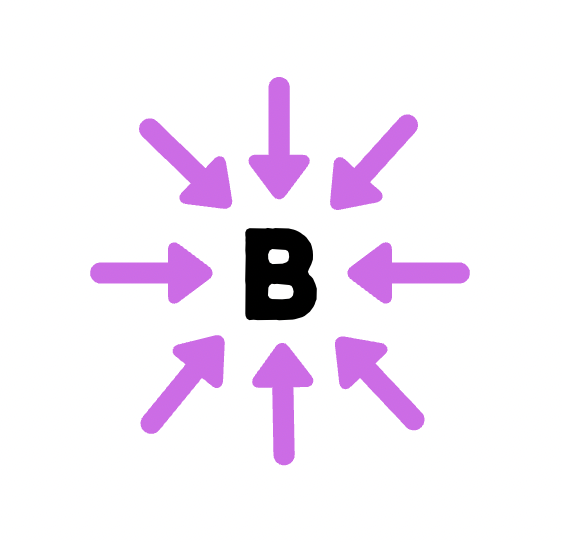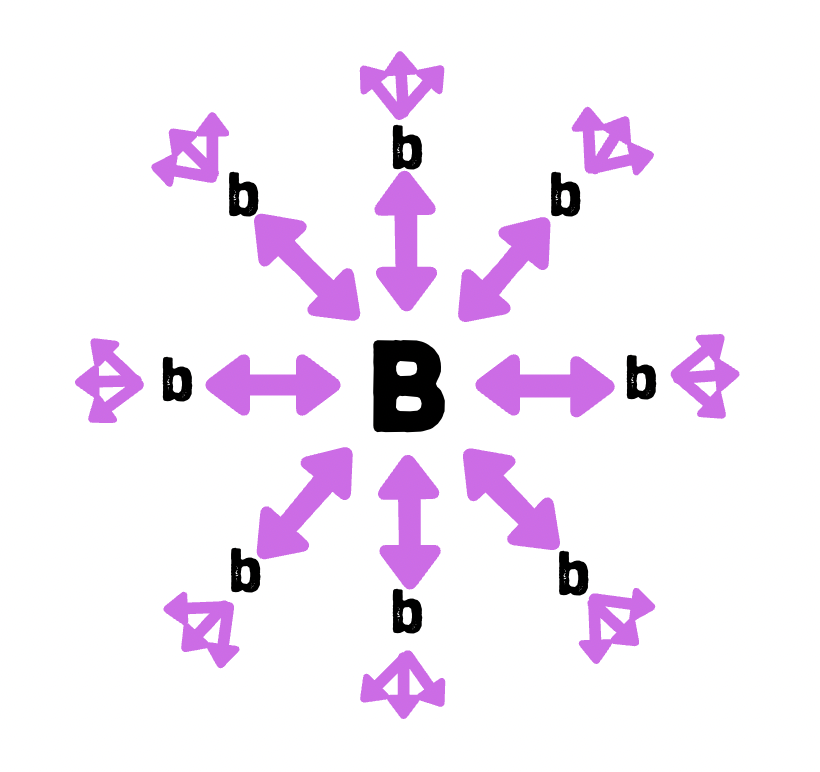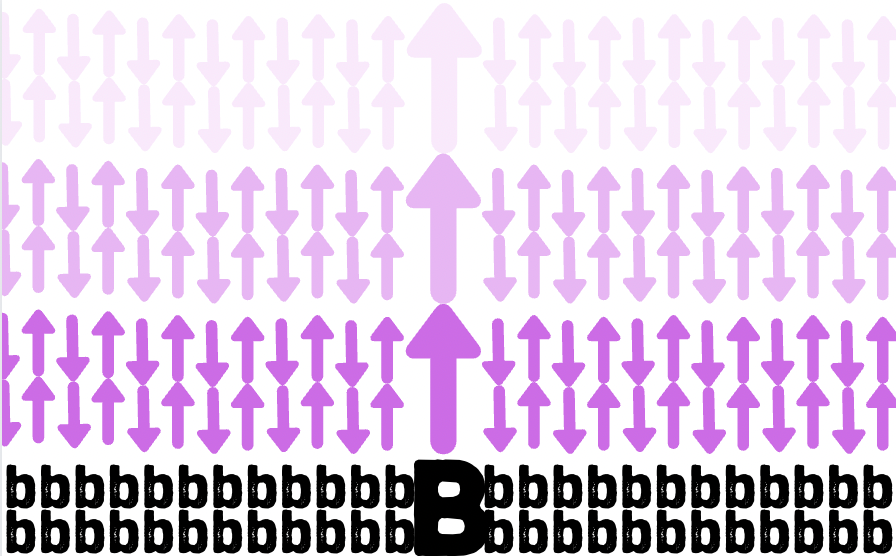Battle of the (Community) Brands
Endurance Nation (www.endurancenation.us) is a vibrant online community of athletes that's almost 15 years old. But it wasn't always that way.
The year is 2007. We are about to launching our new community venture to the world and am full of anxiety.
Literally hours away from telling my current clients – the ones that pay the mortgage – that we're basically firing them (but they can come back at 1/5th the price). As you might recall, this is already after getting jammed by a technology vendor, costing us tens of thousands of dollars.
But I'm not anxious about all that potential financial ruin (hey, 2007 me wasn't the brightest). Instead, I'm besides myself because we just found out that a huge player in our market was about to launch a community too.
Not just anyone either. A really smart guy with a good coaching business, incredible communication skills and an even better athletic resume. Alarm bells everywhere.
We had set a date for launch, however, and there was no turning back. Hitting refresh refresh refresh on the web, we went live.
Not 24 hours later we got the alert of our competitor's launch and I was able to fully exhale. No worries.
Know why? We had launched Endurance Nation and he had launched Endurance Corner. As far as I was concerned, we had won the brand war. Game on.
Are You Brand Ready?
As a new community creator, or a creator new to community building, you are likely really fired up about the opportunities that community can bring.
Community is your moat. Community is your tribe. Community that you control instead of renting space on Facebook.
Unless you have a solid brand already – or one waiting in the wings – your community start up is in jeopardy.
Why do you need a brand this early for your community? So many reasons, but for starters here are my top three.
Your Community (YC):
- YC needs a differentiating factor (why your community?)
- YC has to be memorable (will they remember your community in the future?)
- YC must be relevant to your target audience (make that puzzle piece fit!)
All of this is possible with lots and lots and lots of words. Or, you can build a brand.
Step One of Community Design is Defining Your Brand
Starting a community project is daunting simply because there are so many other community alternatives out there. Yes, already. Yes, even for your specific niche. But that shouldn’t stop you.
If you think about it, consumers are used to having lots of alternatives. Just take a walk down the cereal aisle in your local grocery store. There are literally hundreds of different options for the same thing.
Communities function the same way. There are many places to talk about becoming a mindful leader (for example), so why would someone choose your space over another? Hint: It’s your brand.
A good brand helps the right folks find you, and the wrong folks find someone else.
Your brand is the essential component that helps people decide why they want to choose your community over all the others.
As creators, this makes sense when we think about products.
But it doesn’t always feel right when we’re talking about community. But the lesson still stands -- your community is still a commodity. And people are shopping. .
This highlights one of the unique paradoxes of creating a community:
- The more specific you are, the people you exclude.
- The more specific you are, the higher the likelihood that your community will be sustainable.
- The more people you exclude, the higher the likelihood your community will be sustainable.
Good news is, you aren’t actually picking people...you are defining your brand. And brands help people make decisions.
Great Brand Communities are All Around Us
We all have brands in our lives that we’ve chosen to associate with, consciously or subconsciously.
We make brand choices around cars, coffee, shoes on, and bags, sunglasses.
- What airline do you fly over the others?
- Which insurance do you choose over the others?
- What type of computer or phone do you use over the others?
If you’re stuck for inspiration during this stage, refer back to the brands that you’ve chosen or that resonate with you.
A Brand Helps Sustain You
One of the most powerful effects of a brand is the message that it sends she remembers into the broader world. That message has lasting power. It transcends any short-term changes or bumps and changes that might happen along the way.
A solid brand allows you to have smooth leadership change, for example. Why? The community is about the brand, not any one person.
Your brand is the first impression your community makes with new members.
A solid brand can enable you to weather controversy on a particular topic or current event. Why? Because people have long-term relationships with brands..
Once you’ve chosen a brand, it’s cognitively very difficult to “switch” brands. As creators, we want to use this to our advantage.
Once a customer or member has interacted with your brand, that brand message really sticks with them moving forward. For better or for worse, changing that perception is difficult for choosing a brand careful these important.

Level 1: Brand as a Magnet
Iconic brands are more than images. They exude feeling and emotion. For community purposes, a good brand is a magnet. It attracts the right people while simultaneously turning the wrong people away.
Done properly, your brand will attract people to engage.
For example, I might have been researching marketing topics for months, but your brand speaks to me. Instantly, I am engaged.
A good brand also sets the tone for the earliest members. It’s just as important as any guidelines you have designed for the community. If the right people are showing up in the first place, they’ll be predisposed to do the right thing.

Level 2: Brand as a Multiplier
Another reason a strong brand is important for your community -- attracting the right people will, by definition, attracts the connections of those people. The right people begat more of the right people. And these early adopters are momentum builders.
Your brand is the message that the early members pass along to others. They might like your app, but they’re not going to share it with everybody. Not everyone is raving fan, even earlier doctors. But when the topic or the timing is right, they will share your brand.
A good brand helps other people decided about how to help you grow.
I am more likely to recommend something where I had a good experience. Or had an experience that helped me. And your brand makes it easy to share -- with a clear name and value proposition.

Level 3: Brand as a Foundation
Over time that small brand you started grows with the care of your members. The message spreads. Eventually it becomes part of the foundation upon which your community itself is built.
This is a time intensive process, but it related to just how important a compelling brand can be in terms of setting up your success.
As a creator, having this brand foundation gives you more flexibility. If you started with podcasting or blogging or newsletter, can you establish a brand around your message and the experience you create inside your community.
As this solidifies over time, the foundation and experience gives you permission explore other avenues such as video or live events or courses.
For creators, Jay Claus (@jayclouse) is a great example of this. While he started working for others, he parlayed his product expertise into helping others. That led to a course. That led to a community. That now is a podcast and a newsletter and much more.
Jay was able to branch out to new spaces and take on new roles as he grew his personal brand. He remains at the center of that brand, and the beauty of it is that no matter what he decides to do, the consumers of the brand know exactly what they’re going to get when they interface with Jay.
How to Build Your Brand
There is no one right way to create your brand.
For some of you, your community brand will be an extension of the the product / course / service that attracted your customers in the first place. For others, your new venture will require a fresh start.
I think this article from the Team at Shopify really exemplifies the brand as commodity mindset, and I encourage you to read it: https://www.shopify.com/blog/how-to-build-a-brand
Up Next
Next week we’ll move on from brands and talk about Onboarding and the key steps you can take to overcome the challenges of those first 30 days inside your community.
Thanks for reading and for sharing!
